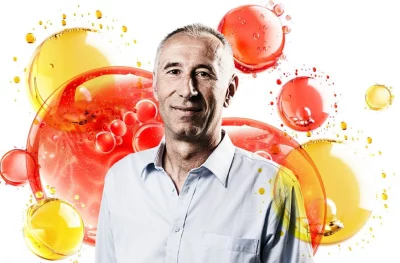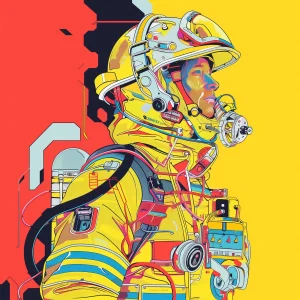Alvaro Goncalves, Technical Director of Wearin’, was interviewed in June 2024 by Swissmem, Switzerland’s leading association for SMEs and large companies in machinery, electrical equipment and metals (MEM) industries and related technology sectors.
Alvaro shares his insights on how AI can reduce occupational risks and improve people’s health:
 Alvaro Gonçalves
Alvaro Gonçalves“Thanks to AI, we help people in dangerous situations, such as the fire brigade or the police during an operation. Wearin’ is an intelligent IoT platform that provides real-time insights by collecting data during the mission, correlating it, interpreting it, learning from it and automatically triggering alerts in crisis situations. For example, we can see the location of the emergency services, their surroundings and their well-being. Important data is sent to both the user and the decision-makers. This enables health and safety risks to be identified at an early stage and live coordination to be improved.
AI-supported data processing enables heat stress and acute stress, a man on the ground or an attack on an armored vehicle to be detected and helps to prevent future risks.”
To do this, our safety vests require lots of sensors and also AI that we can train for a specific person based on their age, physical condition, stature, gender, etc. More specifically: conventional wearables measure data such as heart rate – but the context is missing. Why is the heart beating faster? Is the person running, outside, on a slope, or exposed to poison and afraid? We, on the other hand, collect so much data that we can understand the user’s situation.
“If a firefighter goes into a burning building and only has 50% oxygen left in the gas cylinder, we can accurately predict that if this person continues to breathe so quickly at this age and condition, he will have to go back at a very specific point of time.”
For a cash-in-transit customer, we developed an algorithm that identifies when a vehicle stops at an unusual location. The data is compared with Google Maps, TomTom & Co: Is the vehicle just stuck in a traffic jam? Is there a new traffic light there? We also have access to camera images. However, if the van has not stopped there in the last six months and there is no obvious reason for this, our systems will raise the alarm. It could be a robbery or something similar. It takes 1 minute 30 to identify the situation. This happens more frequently with new customers when they travel unknown routes to supermarkets etc. to collect money. The AI first has to get to know these journeys, but it gets better and better through training. Of course, we don’t want any data leaks in all of this. That’s why data security is extremely important to us: end-to-end encryption protects confidential information, while high-speed transmission ensures real-time data collection.
